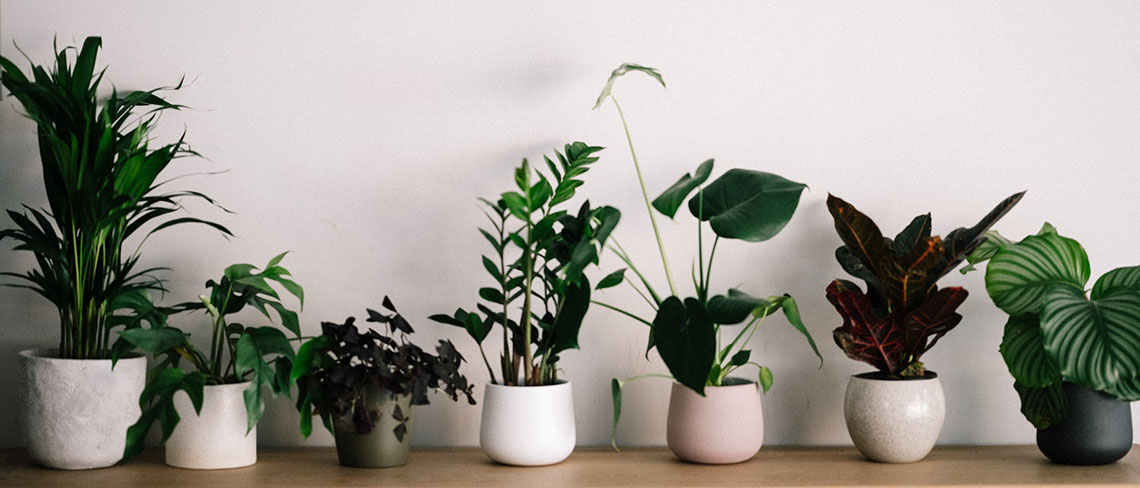
Lifestyle expert shares complete guide to caring for houseplants.
Plant care can feel like a minefield – from knowing which plant to put where, and whether to top water or bottom water, to understanding how much is too much water and how much isn’t enough! Catharina Björkman, Scandi lifestyle expert at Contura, believes that with a few simple tricks anyone can cultivate a green thumb and enjoy beautiful, healthy houseplants.
Catharina says, “Having a home filled with plants increases our connection with nature, improves air quality, and gives our home a boost of natural beauty. For many though, the idea of caring for plants and creating their own urban jungle feels like a pipedream due to a lack of gardening prowess – but it needn’t be this way.
“The key to caring for any plant is understanding its basic needs and adapting accordingly.
“Basic needs could be a preference for a sunny windowsill, a steamy, humid bathroom, or to be kept out of direct sunlight in a shady spot. It could also be the difference between top watering versus bottom watering. If you’re unsure, a quick Google – or trip to the garden centre – will help you work this out.
“And, whilst these basics are a good guide for getting started, to successfully care for your plant year-round you will need to monitor its reaction to its surrounding climate. This could mean less watering in the cooler months and/or moving it to a less sunny spot in summer. Then it’s a simple case of keeping an eye out for any unusual changes; fungus gnats, burnt leaves and raised roots may sound terrifying but they are all very common houseplant complaints and easily remedied.
“You may not be able to ensure every plant you own flourishes, but with these solid tips you will be well on your way to becoming a better gardener and enjoying healthy, abundant houseplants.”
Read on for Catharina’s guide to caring for your houseplants…
Location, location, location
Every surface in every room of every home will have its own micro-environment with a different temperature, light exposure, humidity and moisture level. Therefore, don’t be afraid to move your plant around in order to find the spot it most enjoys.
Finding the perfect location for your plant is often trial and error. That said, most plants have a general preference – whether that be for direct exposure to sunlight (i.e. on a windowsill) or humidity (i.e. in a bathroom). Make sure to do your research ahead of purchasing a new plant to ensure that you have an appropriate spot to keep it in.
When to water
A consistent watering schedule is key for the health of any houseplant. Whilst there’s no hard and fast rule as to how often you should water your plants, once a week is a good starting point.
If, after a week, the soil looks moist, push your finger into the top inch of soil – if it’s dry, it’s time to water your plant but if it’s damp, you can wait a few more days. And if the soil looks dry and cracked, you will need to increase waterings to twice a week. Don’t be tempted to overwater though, think little and often instead.
You will likely find that in summer you need to water more frequently, and that you can get away with less frequent waterings in winter.
If you’re likely to forget, set a weekly reminder on your phone.
Top watering vs bottom watering
Just like us, some prefer a shower whilst others prefer a good soak in the tub.
Bottom watering, aka watering plants from the bottom, is when you sit the pot containing your houseplant into a container or sink filled with water. If you have lots of plants, it’s often quicker to use the bathtub. The soil acts like a sponge and ensures that more than just the top layer is saturated. Bog plants (plants that have consistent moisture in nature), seedlings, and root-bound plants all do best with bottom watering.
Traditional top watering, watering from above, is ideal for plants with shallow roots i.e. snake plants, succulents and pothos. Just make sure to aim the water at the base of the plant – close to the roots – rather than showering from above to avoid run-off.
Drainage is key
Houseplants need drainage, otherwise you stand the real risk of overwatering them. As such it’s always best to use pots with drainage holes at the bottom. Alternatively, pot your plant in a plastic nursery pot with a drainage hole before slotting inside a decorative pot.
If you notice fungus gnats – small black bugs flying around on the soil of your houseplants – you are likely overwatering your plants and/or they don’t have adequate drainage.
If your plant is potted in a plastic nursery pot sitting within a decorative pot, it’s worth double checking if water has collected at the bottom of the latter. If so, simply drain the water and reduce the amount of watering both in quantity and frequency.
Keep the bugs at bay
There’s nothing more demoralising than finding your previously healthy plant is being destroyed by bugs. This doesn’t mean the end for your plant though!
Neem oil is an effective and natural way to kill bugs and flies that are a little too interested in your precious plants. The best thing about this wonder oil is that it only kills insects that eat plants and doesn’t harm any beneficial bugs. It can also be used as a soil drench to kill pesky fungus gnats, that live and breed in the potting soil of indoor plants which, as mentioned, are a common complaint of houseplants without adequate drainage.
Create a homemade insecticide using 1 ½ tsp neem oil concentrate with 1 tsp mild liquid soap and 1 litre of tepid water. Put all of the ingredients into a spray bottle, shake well and spritz your plants from top to bottom once a week. For use as a soil soak, simply spray both the plant and soil.
Plants get sunburnt too
Just like us, plants can suffer from sunburn if they are exposed to too much sunlight.
Whilst prevention is better than cure, if an unexpected few days of sunshine has ‘burnt’ your plant, you will notice that the leaves exposed to the sunlight, have turned yellow or white, and might even be brown and crispy around the edges.
Cacti and succulents love direct sunlight, so if you want to keep plants on a sunny windowsill year-round best opt for these.
Keep your plants looking and feeling fresh
Plants absorb carbon dioxide from the air in order to grow, releasing oxygen in the process. However, dusty, grimy leaves can’t absorb as much carbon dioxide or release as much oxygen into the air, negatively impacting both the plant’s health and the air quality. Therefore, dusting your plants is crucial.
If you have plants with large leaves, it’s also worth cleaning them once a month. A clean, damp cotton pad, cloth or paintbrush run along the top and underside of the plant’s leaves will do the trick.
Regularly pruning your plants, removing dead or dying leaves and/or branches to allow for new growth, and opening windows to let air in, so that they are able to breathe in fresh air and pump out even more oxygen into the space, will also help keep your plants healthy.
Give your plants some love
Research has found that plants respond to the vibrations of nearby sound which switches on two key genes inside them that influence their growth. Plants react favourably to low levels of vibrations which increase growth while harsher, stronger vibrations have a negative effect .
So, just as you would with a loved one – speak gently and tell your plants how great they are! Not only will you be rewarded with a beautiful, healthy houseplant, but caring for plants is known to reduce blood pressure and stress levels. It’s a win, win!
-Ends-
Notes to editors:
Rooster PR will coordinate comment, interview and profile opportunities for Contura UK Country Manager, Phil Wood. The Contura PR team will also arrange visits to the nearest Contura Design Centre dealerships or the Contura showroom in Doncaster to see the product range.
For further press information, please contact:
Tilly Everard | Anna Nyman | Elsa Findlay | Julie Aguilera
Rooster.
T: +44 (0)203 440 8930
E: [email protected]
About Contura:
Contura is Europe’s leading manufacturer of wood burning stoves, offering an extensive range of classic and contemporary wood burners; from traditional insert stoves suitable for existing fireplaces, to freestanding statement models made with innovative materials such as soapstone.
Starting at £1,495, Contura stoves are premium yet affordable. Award winning, timeless Swedish design means the products complement or enhance any style of home, whilst also offering outstanding performance, maximum efficiency, practicality and ease of use.
Designed and assembled at the factory located in Markaryd, Sweden, and manufactured to the highest standards, Contura stoves are highly energy efficient, offering powerful convection, superior combustion technology and clean burning systems. All Contura stoves are DEFRA Clean Air Act exempt and thus approved for use in Smoke Control Areas.
Contura stoves can be purchased through a network of 165 independent retailers nationwide.
Contura is part of the NIBE group, a Swedish manufacturing company producing world class solutions in sustainable energy across Europe, North America, Asia and Australia.
Contura is a founding member of the Stove Industry Alliance (SIA) in the UK.
For more information please visit www.contura.eu






